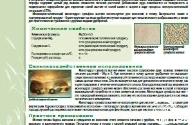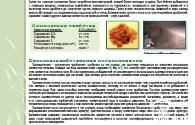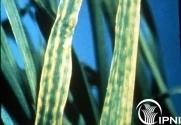Magnesium (Mg)
Nerrisa Paduit, Mirasol Pampolino, Tin Maung Aye, and Thomas Oberthür
Thomas Oberthür, Marianne Samson, Noel Janetski, Kate Janetski, and Myles Fisher
Magnesium (Mg) is one of nine macronutrients and is taken up by plants in quantities similar to that of phosphorus (P).
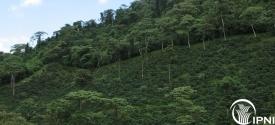 Improving Coffee Crop Nutrition in Vietnam
Improving Coffee Crop Nutrition in VietnamThe main objective of this project is to understand current crop nutrition practices in Coffee in Vietnam, with the aim to use the insights and develop based on them field trials that support and prom ...
This project engages scientific authors, consultants, service providers, and other partners to identify suitable collaborators for IPNI SEAP, and then establish partnerships that add value to research ...
Magnesium (Mg) is one of nine macronutrients and is taken up by plants in quantities similar to that of phosphorus (P).
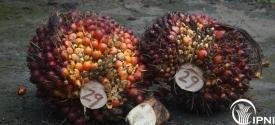 IPNI Southeast Asia's International Publication Partnership on Oil Palm Nutrition
IPNI Southeast Asia's International Publication Partnership on Oil Palm NutritionOur understanding of the importance of nutrients for sustainable oil palm production is incomplete. Extensive experimental work has been dedicated to understand yield response of oil palm to nutrients ...
This project delivers training on the application of 4R principles in all stages of the oil palm production cycle from the initial nursery stage to the productive mature stage.
Magnesium (Mg) is one of nine macronutrients and is taken up by plants in quantities similar to that of phosphorus (P).
This project is focused on high-yield continuous corn systems - Irrigated.
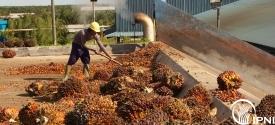 Estate Scale Experiments (ESE) in Oil Palm: Supporting the Oil Palm and the Fertilizer Industry to Meet the Demands of Sustainable Intensification
Estate Scale Experiments (ESE) in Oil Palm: Supporting the Oil Palm and the Fertilizer Industry to Meet the Demands of Sustainable Intensification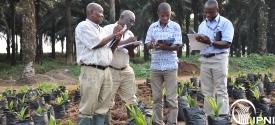 Oil Palm Best Management Practices in Ghana
Oil Palm Best Management Practices in GhanaThe oil palm sector in West Africa is developing extensively, yet plantation and small producers are performing well below their potential, with yields as low as one-third of the optimum. In order to ...
Paper presented at PIPOC 2013, Kuala Lumpur, Malaysia
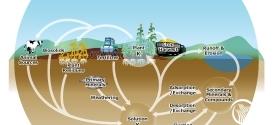 Generalized Nutrient Cycles
Generalized Nutrient CyclesView and download some of the generalized nutrient cycles developed by IPNI.
Dr. Forrest Nielsen, Research Nutritionist, U.S. Department of Agriculture
This project is focused on high-yield continuous corn systems - Rainfed
 Sintomas de deficiência de magnésio
Sintomas de deficiência de magnésioMagnésio: As folhas mais velhas amarelecem nas margens e depois entre as nervuras dando o aspecto de estrias; pode vir a seguir necrose das regiões cloróticas; o sintoma progride para as folhas mais n ...
 Folhas com deficiência de magnésio: clorose internerval e nervuras de cor verde-pálido
Folhas com deficiência de magnésio: clorose internerval e nervuras de cor verde-pálidoMagnésio: A deficiência de magnésio causa inicialmente uma cor verde-pálido nas bordas, passando após para uma clorose marginal nas folhas mais velhas, e com o decorrer do tempo a clorose avança para ...
 Deficiência de magnésio
Deficiência de magnésioMagnésio: As folhas mais velhas amarelecem nas margens e depois entre as nervuras dando o aspecto de estrias; pode vir depois necrose das regiões cloróticas; o sintoma progride para as folhas mais nov ...
 Deficiência de magnésio: folhas mais velhas com clorose internerval que progride do centro para os bordos do folíolo
Deficiência de magnésio: folhas mais velhas com clorose internerval que progride do centro para os bordos do folíoloMagnésio: Clorose fraca, generalizada, com nervuras verdes, que progride das folhas mais velhas para as mais novas. Com a progressão da deficiência surgem manchas pálidas com contorno irregular, quase ...
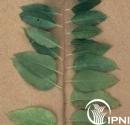 Deficiência de magnésio: Progressão dos sintomas conforme posição das folhas no ramo de E. grandis
Deficiência de magnésio: Progressão dos sintomas conforme posição das folhas no ramo de E. grandisMagnésio: As folhas velhas apresentam manchas amareladas, com as nervuras permanecendo verdes.
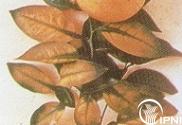 Deficiência de magnésio
Deficiência de magnésioMagnésio: A clorofila começa a desaparecer na parte basal da folha entre a nervura principal e a margem; a progressão é usualmente para fora, deixando a figura de uma "cunha" na base da folha; pode, e ...
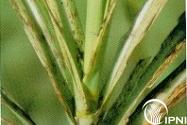 Deficiência de magnésio: as pontuações necróticas atingem as bainhas
Deficiência de magnésio: as pontuações necróticas atingem as bainhasMagnésio: Aparência mosqueada ou clorótica começando nas pontas e ao longo das margens; lesões necróticas vermelhas resultando em aparência de "ferrugem".
 Deficiência de magnésio
Deficiência de magnésioMagnésio: as folhas mais velhas mostram cor amarela e depois pardacenta entre as nervuras e caem prematuramente.
 Folhas de arroz com deficiência de magnésio
Folhas de arroz com deficiência de magnésioMagnésio: Os sintomas de deficiência iniciam-se nas folhas mais velhas, com coloração amarelada e, mais tarde, a área entre as nervuras da folha torna-se alaranjada.
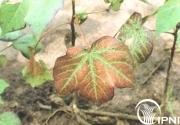 Avermelhamento internerval devido à deficiência de magnésio
Avermelhamento internerval devido à deficiência de magnésioMagnésio: Da mesma forma que o cálcio, os distúrbios nutricionais com magnésio ocorrem com freqüência em solos ácidos. As plantas desenvolvem-se lentamentes, surgindo nas folhas do "baixeiro" uma clor ...
http://www.ipni.net/specifics
Presentación en el Taller organizado por ASP en San Antonio de Areco el 7 de julio de 2011.
Presentación realizada en Marcos Juárez (Córdoba) el 3 de Mayo de 2011.
Magnesium nutrition of plants is frequently overlooked and shortages will adversely impact plant growth. Many essentialplant functions require adequate Mg supplies, the most visible being its role in ...
Dr. Paul E. Fixen, Senior Vice President and Director of Research at IPNI, will present the highlightsof the recently released summary which compiled the results of approximately 4.4 million soil test ...
A Current Issue: Sustainable Production Systems under No-Till in the Cerrado
IPNI Research Project Summaries - 2010 This past year we provided financial and in-kind support to over 100 projects around the world. Our scientists work closely with the researchers and cooperators ...
IPNI INTRODUCES “NUTRIENT SOURCE SPECIFICS” SERIES June 1, 2010—Norcross, Georgia, USA—The International Plant Nutrition Institute (IPNI) is introducing a new series of one-page, condensed fact sheets ...
The Regional Consortium of Agricultural Experimentation (CREA), a farmer organization based in Southern Santa Fe, has collaborated with IPNI to establish a network of field experiments
 Grain mineral contents in southeastern Australia
Grain mineral contents in southeastern AustraliaResults of a survey of wheat grain nutrient concentrations
How will elevated carbon dioxide affect wheat grain macro and micro nutrient concentrations and grain functional properties.
Nowadays there are several oil palm regions in Latin America with plantings of the OxG material, which is a cross of Elaeis oleifera (American oil palm) with E. guineensis (African oil palm). There ar ...
There is a large and unmet demand of local research in oil palm nutrition. With support of the national oil palm guild we are carrying out a fertilizer trial in Ecuador to find local reference values, ...
Brazil has been the world’s largest producer and exporter of coffee for at least 150 years. However, average yields remain low at 900 kg/ha. Potassium fertilization is one of the main factors influenc ...
Presentación realizada en la Jornada Técnica “Manejo de nutrientes y suelos en sistemas lecheros”, organizada por la Facultad de Agronomía de la Universidad de la República de Uruguay en Canelones el ...
Results of 2007 Crop Nutrient Deficiency Photo Contest On this page, we highlight winners for each of the four categories. The entries were judged on the overall quality of the image as well as the su ...
The secondary nutrients…sulfur (S), magnesium (Mg), and calcium (Ca)…do not always get the recognition of some others, but they are essential and play key roles in the growth and health of plants, ani ...


